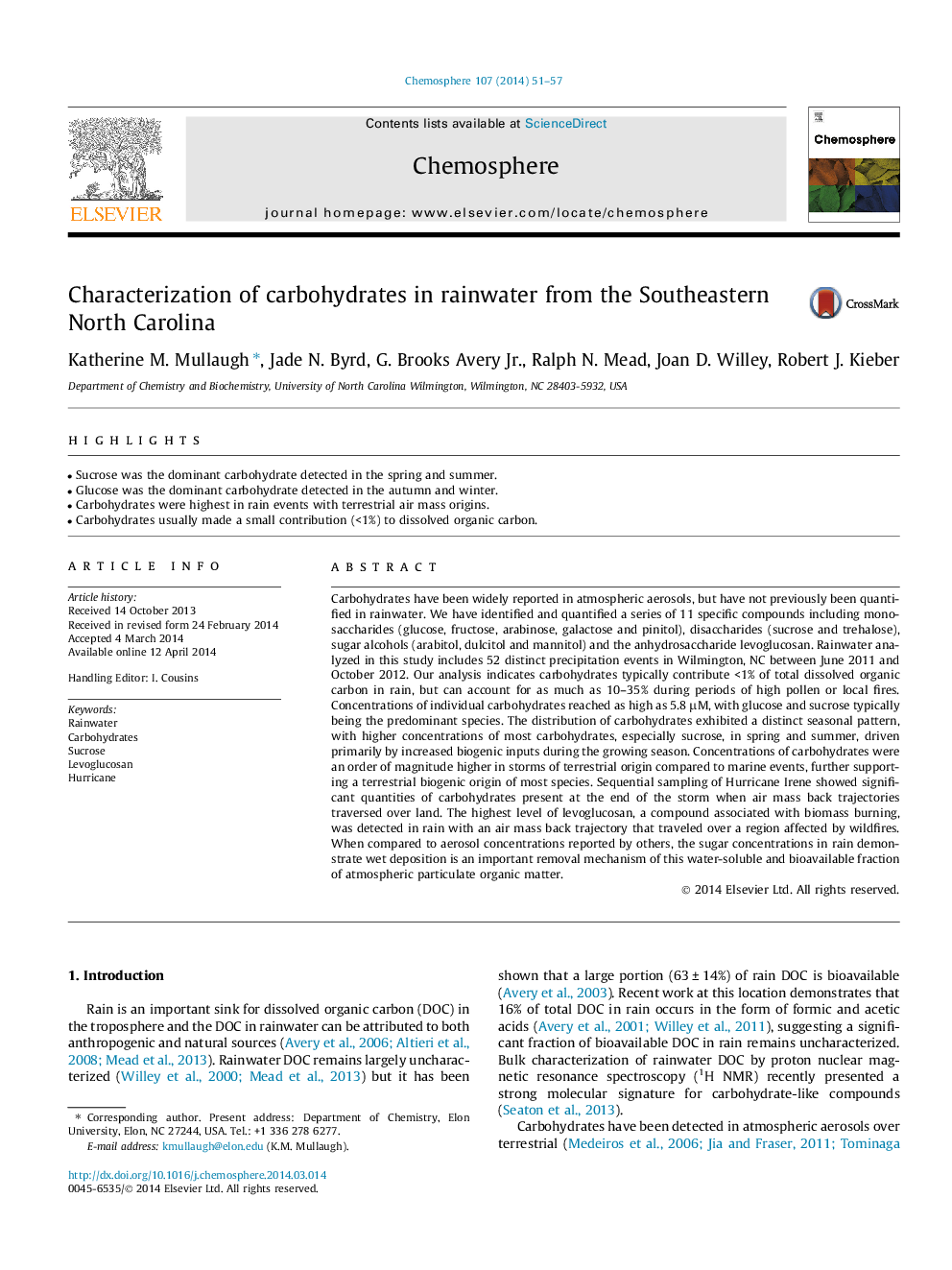| کد مقاله | کد نشریه | سال انتشار | مقاله انگلیسی | نسخه تمام متن |
|---|---|---|---|---|
| 6309095 | 1618864 | 2014 | 7 صفحه PDF | دانلود رایگان |
- Sucrose was the dominant carbohydrate detected in the spring and summer.
- Glucose was the dominant carbohydrate detected in the autumn and winter.
- Carbohydrates were highest in rain events with terrestrial air mass origins.
- Carbohydrates usually made a small contribution (<1%) to dissolved organic carbon.
Carbohydrates have been widely reported in atmospheric aerosols, but have not previously been quantified in rainwater. We have identified and quantified a series of 11 specific compounds including monosaccharides (glucose, fructose, arabinose, galactose and pinitol), disaccharides (sucrose and trehalose), sugar alcohols (arabitol, dulcitol and mannitol) and the anhydrosaccharide levoglucosan. Rainwater analyzed in this study includes 52 distinct precipitation events in Wilmington, NC between June 2011 and October 2012. Our analysis indicates carbohydrates typically contribute <1% of total dissolved organic carbon in rain, but can account for as much as 10-35% during periods of high pollen or local fires. Concentrations of individual carbohydrates reached as high as 5.8 μM, with glucose and sucrose typically being the predominant species. The distribution of carbohydrates exhibited a distinct seasonal pattern, with higher concentrations of most carbohydrates, especially sucrose, in spring and summer, driven primarily by increased biogenic inputs during the growing season. Concentrations of carbohydrates were an order of magnitude higher in storms of terrestrial origin compared to marine events, further supporting a terrestrial biogenic origin of most species. Sequential sampling of Hurricane Irene showed significant quantities of carbohydrates present at the end of the storm when air mass back trajectories traversed over land. The highest level of levoglucosan, a compound associated with biomass burning, was detected in rain with an air mass back trajectory that traveled over a region affected by wildfires. When compared to aerosol concentrations reported by others, the sugar concentrations in rain demonstrate wet deposition is an important removal mechanism of this water-soluble and bioavailable fraction of atmospheric particulate organic matter.
Journal: Chemosphere - Volume 107, July 2014, Pages 51-57
